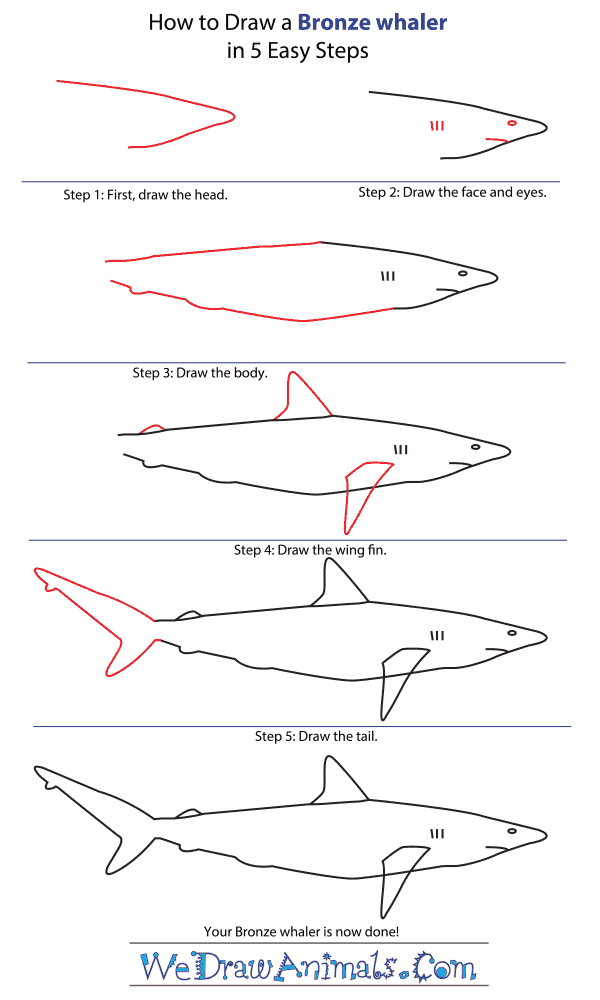In this quick tutorial you'll learn how to draw a Bronze Whaler in 5 easy steps - great for kids and novice artists.
The images above represent how your finished drawing is going to look and the steps involved.
Below are the individual steps - you can click on each one for a High Resolution printable PDF version.
At the bottom you can read some interesting facts about the Bronze Whaler.
Make sure you also check out any of the hundreds of drawing tutorials grouped by category.
How to Draw a Bronze Whaler - Step-by-Step Tutorial
Step 1: First, draw a shape like the tip of a pencil for your bronze whaler's head.
Step 2: Draw three vertical lines for the gills. Add an eye and a mouth.
Step 3: Make two more lines to draw the rest of the body. This is a big shark!
Step 4: Let's draw the fins. The top fin looks like a triangle with a dent in it. A small triangle goes on top near the tail. Finally, on the side of the shark, draw a fin that looks like a wing.
Step 5: Last is the tail. It is a sideways V with one side larger than the other. Add a small bump to the top end of the tail. That's it, you're done!
Interesting Facts about the BRONZE WHALER
The Bronze Whaler is a member of the fish family and the scientific term for them is Carcharhinus brachyurus. This animal also commonly goes by the name of Copper Shark or Narrowtooth Shark. “Brachy-urus” means “short-tail” in the Greek language. They have been referred to as a “whaler” because of their typical consumption of captured mammals from whale vessels as it is brought aboard.
Did you know?
- They can grow to 11 feet long.
- There can be 7 to 24 baby sharks.
- The first one was reported in 1853.
- These animals take up to 20 years to reach maturity.
- Their average water temperature is 54 degrees Fahrenheit.
- The species is the 6th most likely type of shark to attack humans.
It is classified as a Near Threatened species. The fish lives in temperate waters and have live birth. Although they are found in most parts of the world, they stay closer to the shore than the open sea. They have an arched neck, a few eyelids, hooked teeth, but the metallic shine is their most unique characteristic. It can travel alone or with hundreds of individuals. This is the only animal of its genus.






